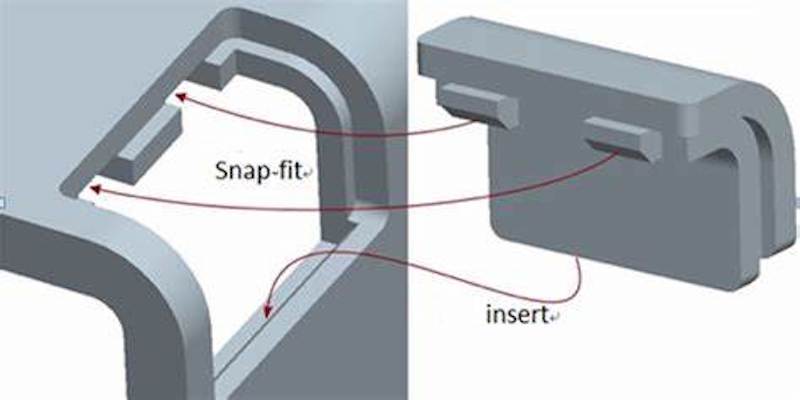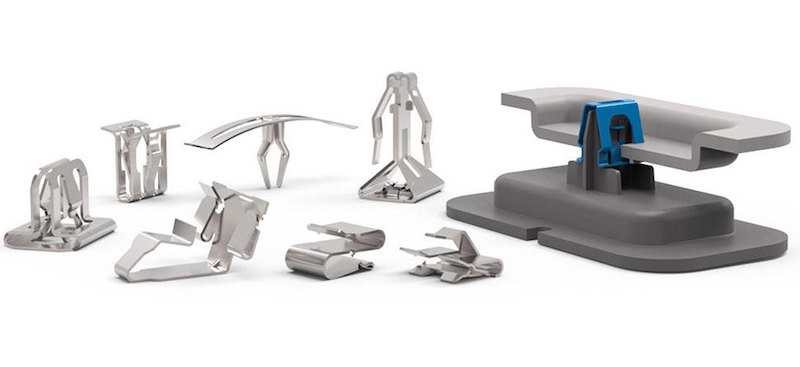In manufacturing assembly, joining one component with another can be very complicated. Designing snap-fits to fasten the different parts during assembly can lead to the best results for the overall component stability and quality. With snap-fits, you can create custom-fitting designs based on the geometrical shapes of each component.
Advantages of Using Snap-Fits in the Assembly Process
Assembling many components during high-intensity and high-volume production can be challenging, especially during the fastening or joining process. Snap-fits can become a suitable solution for your product fitting, fastening, and assembly process. Here are the advantages of using snap-fits in the assembly process:
• Snap-Fit is Simplicity
Snap-fits are simple to install and assemble. You only need to prepare them in the designated area and snap them to fit into the other component. It's so simple to do even a non-experienced worker can do it properly. Labor costs will be minimal when you use snap-fits in your assembly process.
• Cost Effectiveness
Creating snap fits for your assembly components will be much cheaper than other fitting solutions. For high-volume production, snap-fits can give you a lot of cost-cutting benefits. Snap-fits can cover more areas around the components, meaning you will use fewer snap-fits to cover larger component areas. It can help cut down your production costs significantly.
• Snap-Fit is Fast Assembly for High-Volume Production
Using snap-fits is the best solution to ensure a quicker assembly process in high-volume production. Fitting the components using snap-fits can take only a few seconds each, making it possible for you to boost the production timeline.
• No Loose Parts
Using any other joiners, such as screws, can give you a potential risk of loose parts during assembly and disassembly processes. Snap-fits can ensure this problem won't happen, as the joining components will fit perfectly. With no loose parts, you also won't risk losing any fitting parts during the assembly or disassembly process.
• Snap-Fit's Fitting Accuracy and Low Failure Rate
Another advantage of snap-fits for the assembly process is the fitting accuracy it can offer to each component. Also, the failure rate for the fitting design is very minimal. It can help you minimize damaged parts or components during production.
Limitations of Using Snap-Fits
Snap-fits give you alternative fasteners and joiners for various industrial applications. However, there are some limitations of snap-fits you need to know before using them in your rapid manufacturing project. Here are some limitations of using snap-fits.

• Cheap-Looking Components
Most snap-fits use plastics as the primary materials to produce them. These snap-fit joints might look cheap-looking and not too durable. Thus, snap-fits might not be suitable for applications that rely heavily on component durability. Meanwhile, snap-fits are great for making small components in many household items, such as food boxes, laptop enclosures, and phone cases.
• Breaking the Snap-Fits Means Replacing the Whole Component
With other fasteners, such as rivets and screws, breaking one screw means you only need to replace the broken screw. However, with snap-fits, breaking a snap-fit joint means replacing the whole component altogether. Also, it's harder for the end users to find snap-fit replacements when they get damaged.
• It's Challenging to Remove from Its Fitting Place
Once fitted, the snap-fits might be hard to remove from its fitting place. Abrupt removal of snap-fit components can damage the components and render them useless.
• Limited Materials to Use in Snap-Fit
Snap-fits use plastic materials because of their lightweight and elastic characteristics. Plastics make the perfect snap-fits because of the ease of use and how they can easily get pushed to fit into the component. You won't find other materials for producing snap-fits aside from plastics.
• Complex Geometrical Design
Designing a snap fit requires creating a complex geometrical shape both for the insert and the groove cavity. The insert and groove cavity must match and snap to create a reliable interlocking mechanism for your components. From the design standpoint, it can be very challenging to make. Furthermore, the unique design of the insert and groove cavity makes them irreplaceable, meaning that you must not break them.
Snap-Fit Varieties You Can Use
Snap-fits come in various types and sizes, and you can use different types of snap-fits based on each industrial application. Here are the snap-fit varieties you can use in manufacturing assembly:

• Annular Type Snap-Fit
The annular type snap-fits give you a snap-fitting design with a circular shape as the basic shape. An expandable interlocking mechanism of the receiver component will respond when you apply pressure around the area. There's the groove-shaped "key" you can insert into the matching hollow shape of the receiver component to perform the fitting mechanism.
• Cantilever Type
Cantilever snap-fits consist of the fork-like cantilever interlocking "key" with a matching hollow shape on its receiving end. The way to use this fork-like snap-fit design is to slide the interlocking "key" into the receiving component until it snaps. The outer forks will move slightly to the center during the interlocking process.
• Torsion Type Snap-Fit
Torsion snap-fits use the torsional design style to create the snap-fit system that uses springs as its primary interlocking mechanism. The torsion interlocking mechanism will allow you to push the spring to engage and disengage the interlocking components. Torsion snap-fits provide a better grip for the spring interlock to ensure a minimal failure rate and prevent risks of damage.
• U-Shaped Type
The U-shaped type snap-fits have a U-shaped interlocking design that is often foldable. The U-shaped fitting component is a small part of the sizable area component, with the U-shaped interlock being the "key" to insert into the counterpart component. With its design, the U-shaped fitting system might look fragile and prone to damage when you don't apply it gently.
Conclusion
You can use snap-fits as alternative fasteners in your manufacturing assembly process while ensuring the best fitting results at an affordable price. You can design the snap-fits freely to meet your basic product shape requirements, which means that you can have the flexibility to create the best fastener for each industrial application. It's always best to look at the durability aspect of your snap-fit designs to ensure long-term usage and prevention against daily wear and tear.
TEAM MFG offers rapid prototyping, injection molding, CNC machining, and die casting to meet your need. If you need snap-fits shape on your project, contact our team to get manufacturing supports and solutions for the projects.





















